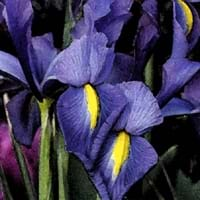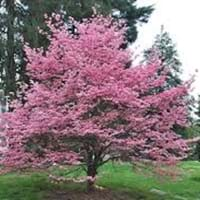Life Span
Perennial
Perennial
Type
Herbaceous Perennial
Tree
Origin
Hybrid origin
Canada, Mid-Atlantic United States, North America, North-Central United States, Southeastern United States
Types
Not Available
Purple Glory dogwood, Cherokee Chief dogwood, Cherokee Daybreak dogwood
Number of Varieties
Not Available
Habitat
meadows, Riverbanks, Rocky Mountains
foothill woods, gardens, Near ponds, Wet Woods, Woodlands
USDA Hardiness Zone
5-9
5-9
Sunset Zone
2b, 3a, 3b, 4, 5, 6, 7, 8, 9, 10, 11, 12, 13, 14, 15, 16, 17, 18, 19, 20, 21, 22, 23, 24
2a, 2b, 3a, 3b, 4, 5, 6
Habit
Clump-Forming
Pyramidal
Flower Color
White, Yellow, Blue, Purple, Orange, Pink, Rose, Coral, Peach, Burgundy, Lavender, Plum, Orange Red, Dark Salmon, Bronze, Chocolate, Black
White, Ivory
Flower Color Modifier
Bicolor
Bicolor
Fruit Color
Not Available
Purple, Black
Leaf Color in Spring
Green, Light Green, Gray Green
Green
Leaf Color in Summer
Yellow green
Green
Leaf Color in Fall
Not Available
Burgundy
Leaf Color in Winter
Light Green
Not Available
Leaf Shape
Sword-like
Ovate
Plant Season
Spring
Spring, Summer, Fall, Winter
Sunlight
Full Sun, Partial Sun
Bright direct sunlight, Partial Sun
Growth Rate
Medium
Medium
Type of Soil
Clay, Loam, Sand
Clay, Loam
The pH of Soil
Acidic, Neutral, Alkaline
Acidic
Soil Drainage
Well drained
Well drained
Bloom Time
Early Spring, Spring, Late Spring
Late Spring, Early Summer
Tolerances
Drought
Cold climate, Soil Compaction
Where to Plant?
Ground
Ground
How to Plant?
Root Plants
Seedlings, Stem Cutting
Plant Maintenance
Medium
Medium
Watering Requirements
Average Water Needs
Allow to dry out slightly between watering, occasional watering once established
In Summer
Lots of watering
Lots of watering
In Spring
Moderate
Moderate
In Winter
Average Water
Average Water
Soil pH
Acidic, Neutral, Alkaline
Acidic, Neutral
Soil Type
Clay, Loam, Sand
Loam, Moist, Well drained
Soil Drainage Capacity
Well drained
Well drained
Sun Exposure
Full Sun, Partial Sun
Full Sun, Partial Sun, Partial shade
Pruning
Remove damaged leaves, Remove dead branches, Remove dead leaves
Prune if you want to improve plant shape, Prune lower leaves, Prune once the plant is tall enough
Fertilizers
All-Purpose Liquid Fertilizer
Fertilize in early spring, Mulch
Pests and Diseases
Bacteria, fungus, Viruses
Crown rot, Leaf spot, Red blotch, Whiteflies
Plant Tolerance
Drought
Humidity, Light Frost
Flower Petal Number
Single
Single
Showy Bark
No
Not Available
Foliage Texture
Fine
Medium
Foliage Sheen
Matte
Glossy
Attracts
Butterflies, Hummingbirds
Birds, Butterflies, Hummingbirds, Squirrels
Allergy
Not Available
allergic conjunctivitis, Headache, Pollen
Aesthetic Uses
Beautification, Showy Purposes
Beautification, Cottage Garden, Showy Purposes
Beauty Benefits
Not Available
For treating wrinkles, Makes teeth white, Making cosmetics, Skin cleanser
Environmental Uses
Air purification
Forms dense stands, Nesting sites for birds, Shadow Tree, soil stabilisation
Medicinal Uses
Not Available
Antibiotic, Appetite enhancer, Cough, Diuretic, Emollient, Weight loss
Part of Plant Used
Flowers, Root
Bark, Flowers, Fruits, Leaves
Other Uses
Basketary, Used for fragrance
Application in Handicrafts, Decoration Purposes, Grown for shade, Used as Ornamental plant
Used As Indoor Plant
No
No
Used As Outdoor Plant
Yes
Yes
Garden Design
Cutflower, Foundation, Mixed Border, Rock Garden, Wall
Edging, Feature Plant, Shade Trees
Botanical Name
IRIS 'Apollo'
Cornus florida
Common Name
Carmen Iris, Dutch Iris
Flowering dogwood
In Hindi
Dutch Iris
flowering dogwood
In German
Dutch Iris
Wechselblättriger Hartriegel
In French
Dutch Iris
Cornus florida
In Spanish
Dutch Iris
Cornus florida
In Greek
Dutch Iris
Cornus florida
In Portuguese
Dutch Iris
Cornus florida
In Polish
Dutch Iris
Cornus florida
In Latin
Dutch Iris
Cornus florida
Phylum
Magnoliophyta
Magnoliophyta
Class
Magnoliopsida
Magnoliopsida
Order
Asparagales
Cornales
Family
Iridaceae
Cornaceae
Clade
Angiosperms, Monocots
Angiosperms, Asterids, Eudicots
Tribe
Irideae
Not Available
Subfamily
Iridoideae
Not Available
Season and Care of Dutch Iris and Flowering Dogwood
Season and care of Dutch Iris and Flowering Dogwood is important to know. While considering everything about Dutch Iris and Flowering Dogwood Care, growing season is an essential factor. Dutch Iris season is Spring and Flowering Dogwood season is Spring. The type of soil for Dutch Iris is Clay, Loam, Sand and for Flowering Dogwood is Clay, Loam while the PH of soil for Dutch Iris is Acidic, Neutral, Alkaline and for Flowering Dogwood is Acidic.
Dutch Iris and Flowering Dogwood Physical Information
Dutch Iris and Flowering Dogwood physical information is very important for comparison. Dutch Iris height is 25.40 cm and width 12.70 cm whereas Flowering Dogwood height is 550.00 cm and width 490.00 cm. The color specification of Dutch Iris and Flowering Dogwood are as follows:
Dutch Iris flower color: White, Yellow, Blue, Purple, Orange, Pink, Rose, Coral, Peach, Burgundy, Lavender, Plum, Orange Red, Dark Salmon, Bronze, Chocolate and Black
Dutch Iris leaf color: Green, Light Green and Gray Green
Flowering Dogwood flower color: White and Ivory
- Flowering Dogwood leaf color: Green
Care of Dutch Iris and Flowering Dogwood
Care of Dutch Iris and Flowering Dogwood include pruning, fertilizers, watering etc. Dutch Iris pruning is done Remove damaged leaves, Remove dead branches and Remove dead leaves and Flowering Dogwood pruning is done Prune if you want to improve plant shape, Prune lower leaves and Prune once the plant is tall enough. In summer Dutch Iris needs Lots of watering and in winter, it needs Average Water. Whereas, in summer Flowering Dogwood needs Lots of watering and in winter, it needs Average Water.





